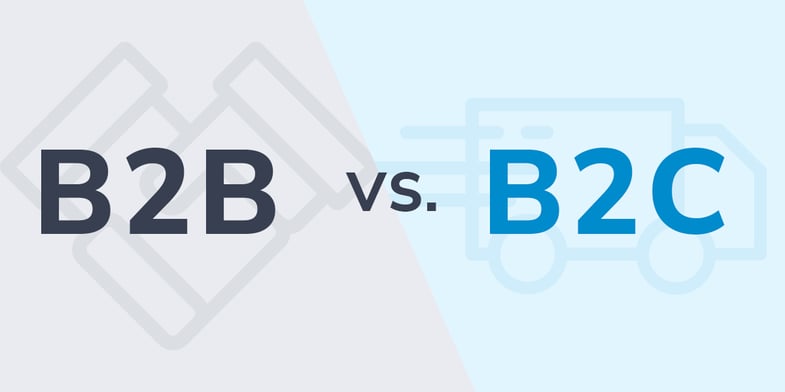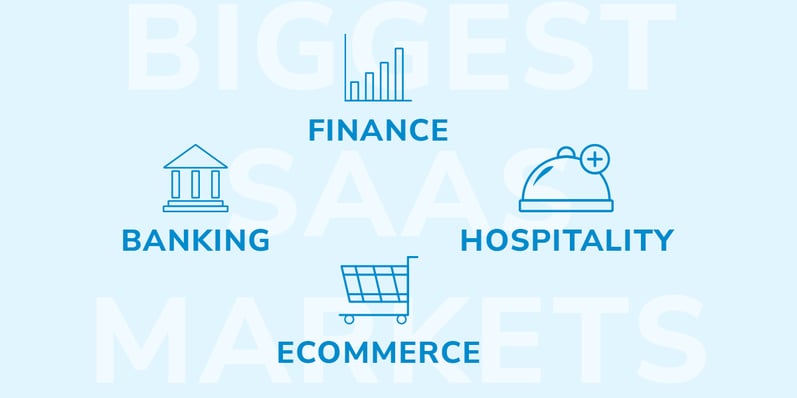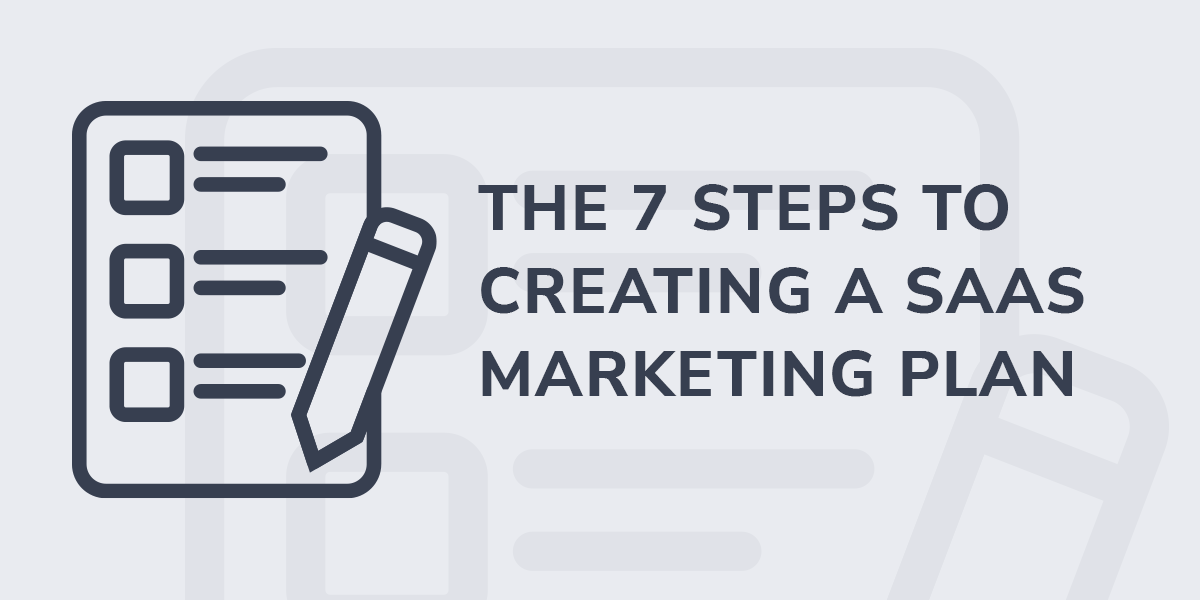The software as a service (SaaS) industry and the organizations that operate within it are only growing as time goes on. Just how big are we talking exactly? Some reports project that by 2026, the SaaS market size will reach $307 billion. The SaaS model has revolutionized the way businesses can operate, often by allowing them to become more agile and adapt to changes in their industry.
With so many companies offering similar solutions to problems, SaaS companies cannot help their customer base if they are unable to effectively reach them by standing out. This is where our team at DemandJump steps in. We have created this comprehensive guide to answer some key questions.
- What is SaaS marketing?
- What does SaaS marketing look like?
- How can you implement SaaS marketing?
- What are ways you can get your team more experience with SaaS marketing?
What is SaaS Marketing?
At its core, the main objective behind SaaS marketing is the same as for any other industry: to build awareness and promote your software to the desired target audience. While digital marketing tactics that work for non-SaaS products are viable, you can still take advantage of other forms, such as print materials and events (both in-person and virtual), to improve product awareness. No matter what strategy your team puts in place, your marketing will funnel through two main channels: organic or paid marketing.
Organic vs. Paid SaaS Marketing
The two primary methods your organization is likely using already are organic and paid marketing. Organic means you do not rely on any method that costs money. This includes channels like:
- Blogs
- Email Newsletters
- Unpaid Social Media Posts
Paid marketing, on the other hand, is any method that requires you to pay for your results. Examples of paid marketing include:
- Promoted Social Media Posts
- Pay Per Click (PPC) Ads
- Influencer Marketing
One report showed that 53% of all trackable website traffic came from organic marketing. Does this mean organic is the best and only route to follow to reach your SaaS marketing goals? Of course not; as with many other elements in this industry, your best bet will be to combine the two to create a robust, two-pronged approach to your campaigns.
For example, blog posts are one of the easiest organic marketing tools you can use every day, and you should combine them with your social media presence to have a more focused and effective effort. First, you create the actual blog post about a new feature coming to your software (organic). After you publish the content, post about it on social media and use the internal promotion feature (paid) that popular sites like Instagram and Twitter have built into them to reach your desired audience more directly.
What Makes SaaS Marketing Unique?
SaaS marketing has a distinct advantage over companies that only produce a physical product. It's significantly easier for SaaS companies to offer free parts of their service versus those in the product world. One way to achieve this is through a freemium model (more on that later).
Another element that makes SaaS marketing unique is that it never truly ends. A customer will not purchase your service once—many SaaS subscription models require that a customer make that same purchase every month or year. This means you must constantly demonstrate your value to existing and future customers.
Now that SaaS marketing has been demystified to something that is much more manageable, a strategy must be put into place to market your software effectively.
What Is a SaaS Marketing Strategy?
A SaaS marketing strategy is a type of marketing that focuses on building awareness, generating leads, and acquiring/retaining customers for your product. An effective strategy combines organic and paid methods to connect with customers, get them to try your service, and keep coming back for more.
Two companies pushing a SaaS product to solve a similar roadblock for their audience may use completely different marketing strategies that could yield success. For better or worse, there is no one size fits all outline for a SaaS marketing strategy. To help guide you along this journey, here are a few SaaS marketing examples and channels that your organization can try to see what generates the best results.
- Lead Generation with Freemium: How can offering your product for free be good for your company? Simply put, freemium works for converting free customers into paid ones. No matter how loyal an audience may seem, they would rather pay nothing for your product. Take advantage of this knowledge and allow your target audience to use a portion or select feature within your offering to give them a taste of how much better life would be if they choose to use you.
- Content Outlets: One of the best ways to market your brand and offerings while connecting with your audience is with content creation. Blogs, e-books, podcasts, video series, and anything your team can think of can all aid your SaaS marketing efforts.
- SEO Marketing: Search engine optimization is the process of improving the quality and quantity of website traffic to your overall site through various methods (i.e., keywords in blogs). Getting anything you create to promote your business on page one of Google can make all the difference in generating business. How important is getting that illustrious page-one spot? Approximately 90% of active web pages get zero web traffic from Google. That other ten percent live and thrive off of that first page. The good news is that you can use plenty of resources to leverage SEO in your favor, such as SEO Pillar strategy.
- Retargeting/Remarketing: The easiest customers to market to are the ones you already know and that are interested in your products and services. Using your website analytics to remarket your content to people who left your site for one reason or another without making a purchase is a fantastic way to gain new customers quickly.
- Paid Advertising: We saved this channel for last as it can be immensely effective for a company, but at the same time, it can fall short of organic methods like SEO content and cost you thousands of dollars in the process. Paid advertising has a high risk-reward ratio as you guarantee that your content will be seen, but not that it will convert them into paying customers. A channel that is gaining more popularity for paid advertisements is social media platforms, such as Facebook, Instagram, LinkedIn, and Twitter.

What Is an Example of B2B SaaS vs. B2C SaaS?
The most direct way to explain the difference between business-to-business (B2B) and business-to-customer (B2C) SaaS is who they sell to. As the name suggests, B2B companies will sell to other businesses, while B2C companies sell directly to consumers. A sample of some products that could be the focus of a B2B SaaS marketing plan are:
- Customer Relationship Management (CRM) Software
- Customer Support Platforms
- Strategic Planning Platforms
Compared to what B2C companies will offer their customers, such as
- Word processing software (Google Docs, Grammarly)
- Photo and video editing software
- Social media platforms
In many cases, a company may not solely be a B2B or B2C company as they will have various products that fit the needs of both audiences. However, these different customer bases will lead to different marketing strategies.
When speaking to people rather than businesses, it will be more common that you use emotional and conversational language. Most companies will attempt to speak to their customer's pain points to relate to the problem they have a solution to. This can incentivize a customer to go with your company as they feel it will be easier to solve their problem with you.
While speaking on an emotional level can also apply to B2B SaaS marketing, a straightforward approach is more common. Most C-suite executives (CEO, CFO, CTO) are looking for a product or service that can help take them to the next stage of their strategic plan. This could mean that your marketing efforts take a more pragmatic approach that relies on data to sell your service.
For example, if you are selling a CRM platform to other businesses, it could be advantageous to include a stat that proves how well your platform works. If your platform, on average, decreases customer churn by over 25%, then that should be plastered all over your marketing content. Data like that can catch the eye of a decision-maker and get them to check out what you are offering more so than an emotional pitch to their business.

What Are the Biggest SaaS Markets?
Banking, hospitality, finance, and ecommerce are just a handful of the larger markets that put SaaS to use every day. Currently, two models dominate this space: horizontal and vertical SaaS. The horizontal model allows larger businesses to cater to a broader customer base. This means they can reach a wider range of industries to run their businesses more effectively and efficiently. The model also makes it easier for expansion by offering its services to incorporate a variety of SaaS categories under a single brand. Here are some examples of organizations that use this model.
- Microsoft (Teams, Office, OneDrive)
- Google (Drive, Docs, Hangouts, Forms)
- Zoom Video Communications (Zoom, Keybase, Zoom Scheduler)
On the other side of the market, vertical SaaS solutions target a specific niche or industry. The focus of this model is on a particular industry's pain points and needs. Here are some examples of organizations that use this model.
- Veeva (Cloud Computing)
- Blackboard (Learning Management System)
- Thapos (Youth Sports Management Platform)
For both the B2B SaaS market size and B2C, the horizontal model is the most popular in the market. This is because the horizontal model focuses on satisfying business needs rather than individual ones.
Why is Marketing Important in SaaS?
Does your organization want to be successful and generate revenue? Then marketing is important to your company. In all seriousness, with the rate that the SaaS industry is growing, it is going to be more important than ever to be able to shine amongst the competition. Marketing can improve the overall performance of a SaaS company in a variety of ways, including
- Helping the buyer(s) self-educate on products and services
- Generating awareness for the products, service, and brand
- Discover the perfect customer base
- Track customers at any stage of the buyer's journey
- Connect with potential prospects when they need your services
At the end of the day, outside of creating content that enriches your audience, you want to be visible to them whenever they are online. You never know when a potential customer or business will hit a roadblock that requires them to go to another organization for a solution. When they are searching for options, you want to ensure that your company is front and center at every click.
How Do I Create a SaaS Marketing Plan?
The plan can be as short or as long as you need it, but here are seven great steps to start with for your SaaS marketing plan.

- Identify Target Audience/Buyer Persona: Who are you selling to? It is not everyone. There is a specific group that will benefit greatly from your products, and you need to identify that group before you start creating a single piece of marketing material. This way, you can write copy that resonates with the pain points and pick channels that will increase your chances of a higher conversion rate.
- Define Goals/Key Performance Indicators (KPIs): Getting concrete data on your marketing efforts' effectiveness can be difficult. This is why outlining specific goals before you launch a campaign can help improve the outcome, resulting in fewer changes that must be made after the fact. Some KPIs to track include revenue and leads, demo requests, and customer acquisition costs.
- Market & Competitor Research: You have the who and what for your campaign, but the how still remains. The creation of a great plan can stem from learning about your competition. One great way to see how you match up is to compare where one another ranks for specific terms on Google. DemandJump's market intelligence ability can give your organization access to data that shows what you and your competition are ranking for and who is performing better. From there, we can advise you on your content's direction to get the best results. Or, if you have a plan in mind already, you can use our data to inform your decisions along the way.
- Create Marketing Content: Once you have a fundamental understanding of your potential buyers, it is time to create the marketing content. It is important to make different content that fits different stages of the buyer journey and questions they ask along the way. From the very top of the funnel when someone first discovers your organization to the last stage where the lead has gotten close to conversion, you need to have content for all those situations.
- Distribute Content through Multiple Channels: Where does your audience live online? Blog posts are a simple way to reach a large audience. However, if you already have data that shows other channels have better engagement, don't create meaningless blogs just to have one. Instead, try creating social media posts that prompt people to sign up for your email blast where you regularly offer discounts for your software. Another helpful tip for this stage is converting one piece of content into another. If you have a useful how-to blog, try converting that into a video to cover all of your bases without having to create extra content.
- Monitor Performance: Once your marketing material is out in the world, the work is not done. You must monitor the performance of your efforts through your previously established goals and KPIs. For example, if you created an email blast, tracking your click-through rate is a great way to measure the campaign's overall performance. Take notes during this stage on what is and is not performing well.
- Implement Changes & Adapt: Every one of your SaaS marketing efforts should build off the previous iteration. Take a close look at what has not been performing well to identify if that content needs to be tweaked to drive leads or if it needs to be scrapped altogether.
If you’ve had a successful SaaS marketing campaign, its time to implement the changes you marked while the campaign was ongoing. However, you may feel that you still want to give your team an extra edge to make your marketing the best it can be. So, how should you achieve this?
How To Improve Your SaaS Marketing Efforts
Becoming effective and efficient with B2B SaaS marketing takes time. One of the best ways that any SaaS company can improve on these strategies is by enrolling your team in SaaS marketing courses. The landscape is always changing around best practices, and one of the only sure-fire ways to ensure your company is marketing your products and services in the best way is through learning new skills or updating current ones.
One of the premier digital marketing courses is the Pillar-Based Marketing Strategist course in DemandJump University. This educational material spans seven in-depth lessons to ensure you have all the knowledge and tools to implement one of the most effective forms of digital content marketing, Pillar-Based Marketing.
No matter what method you choose for your team to gain more knowledge and experience, a SaaS marketing certification from a reputable organization can help ensure you are putting your best foot forward when it comes to promoting your SaaS products and services.
How Much Do SaaS Companies Spend on Different Types of Marketing?
You've probably heard that a company should spend roughly 10% of its revenue on its marketing budget. Should this be the case for every company? Of course not. B2B SaaS marketing goals require different amounts of spending. For example, one large survey found that SaaS firms with above-average growth spend 14% of their revenue on marketing.
However, even this figure is not entirely accurate when we compare it to the bigger players in the SaaS industry. Zendesk, for example, spent 48% of its revenue on marketing, according to its 2020 SEC filings.
Take Your SaaS Marketing To The Next Level With DemandJump
Our goal here at DemandJump is to power the world's content. As a SaaS organization, we understand the challenges preventing these companies from creating quality marketing materials.
SaaS marketing can often be more complicated and thus requires a more nuanced approach. Luckily organizations like ours can step in to guide your content to ensure it lands in front of the right audience.
If you are ready to get your hands on the best SaaS marketing tools in the business, then it is time we talk!












